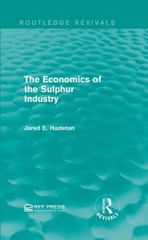i. (10 points) (a) An electronic lm's production function is Q = 51K, whcrc Q = output, L is thc amount oflabor it uses per period, and K is the amount of capital it uses per period. The price of labor is $1 per unit of labor, and the price of capital is $2 per unit of capital. Marginal product of labor is 5K Marginal product of capital is 5L Ifthe rm wants to produce 20 units of output and does so with 2 units of labor and 2 units of capital, is it using the cost minimizing quantity of labor and capital? If not, what should it do (more labor and less capital or more capital and less labor)? You may assume that fractional quantities of labor and capital are available and can be used (for example the rm can hire 1.5 workers or 2.4 units of capital). Please explain and show all calculations. (b) Total Cost Total Fixed Total Average Average Marginal Cost Output Cost Variable Variable Total Cost Cost Cost 100 260 60 200 0.30 300 0.50 400 i .05 500 360 600 3.00 700 i .60 800 2040 Please ll in all the blank cells in the above table. O 10 20 30 IO 50 60 Luberill 2. (10 points) In the above gure, labor costs $100 per unit. The manager wants to produce .500 units of output. You may assume that all the isocost lines shown in the above graph are parallel to each other. Answer the following questions: (a) At point A is the slope of the isocost line greater than or less than the slope of the isoqnant'.' (b) What is the total cost of producing 2,500 units of output at point A? Please show your calculations. (c) What is the price of capital at point A? Please explain. (d) When the rm moves from A to B on the isoquant, what happens to the quantity of labor and the quantity of capital used? (e) When the rm moves from A to B what happens to the output of the firm? Please explain. (i) What is the total cost of producing at point B? Please show your calculation. (g) What is the slope of the budget line at point C? Please explain. (h) What is the slope of the isoquant at point C? Please explain. (i) If the rm wishes to produce 2.500 units of output, please explain why the firm will not choose to produce at point E on the graph. You must give an explanation. 3 (10 points) (a) Assume that your car has problems with the transmission, and you take it to a mechanic. Is there a principal -agent problem between you and the mechanic? Please give an explanation. (b) If you hire a real estate agent to sell your house, is there a principal agent problem between you and the real estate agent? Please explain 4. (10 points) A student in a managerial economics class calculated the four-rm concentration ratio and HHT for industries A and B. What is the proper conclusion she can draw from the following findings? Industry A Industry B Four- rm Concentration 0.9 1 ratio HH] 3,200 2 ,5 00 (a) ls either industry a perfect monopoly"? Please explain using the information in the question. (b) Is either industry perfectly competitive? Please explain using the information in the question. Note: a perfect monopoly is a market that meets all the assumptions of a monopoly, and a perfectly competitive market is one that meets all the assumptions of a perfectly competitive market] 5. (10 points) (a) Assume that two rms A andE are in different industries (like computer software and computer hardware). What impact will a merger between these two rms have on the number of firms in each industry after the merger? Please give an explanation. (b) Current automobile companies are facing a shortage of computers chips used in cars to run various parts of the car. and therefore supply of cars has decreased since a necessary pants) is not available. If an auto company like General Motors (GM) decided to buy a chip manufacturing company to ensure that it did not face a chip shortage in the future. would such a purchase lead to more concentration in either the auto industry or the chip- manufacturing industry? Please give an explanation. 6. (10 points) (a) In a perfectly competitive industry. the market determined price is $12. For a rm currently producing 50 units of output, marginal cost is $15. average total cost is $14, and average variable cost is $7. Is the rm producing the prot maximizing quantity of output? Why or why not? If not, should the rm increase or decrease output to increase profit? Please explain. (b) The Mercedes Benz dealer in San Francisco states on its website that the same family has owned and operated the company in the same location for over 50 years. It has also chimed in its advertising that it has lower overhead costs than other nearby auto dealers because it has owned this land for 50 years, and that it charges a lower price for its cars because of its lower overhead. What sort of market, perfectly competitive or monopolistically competitive, is the dealer likely operating in? Please give an explanation based on the information in this







